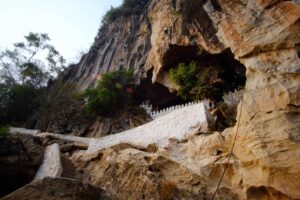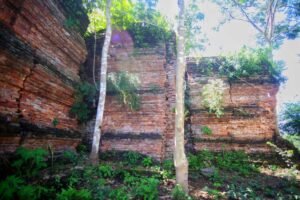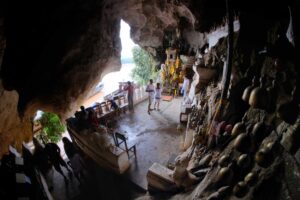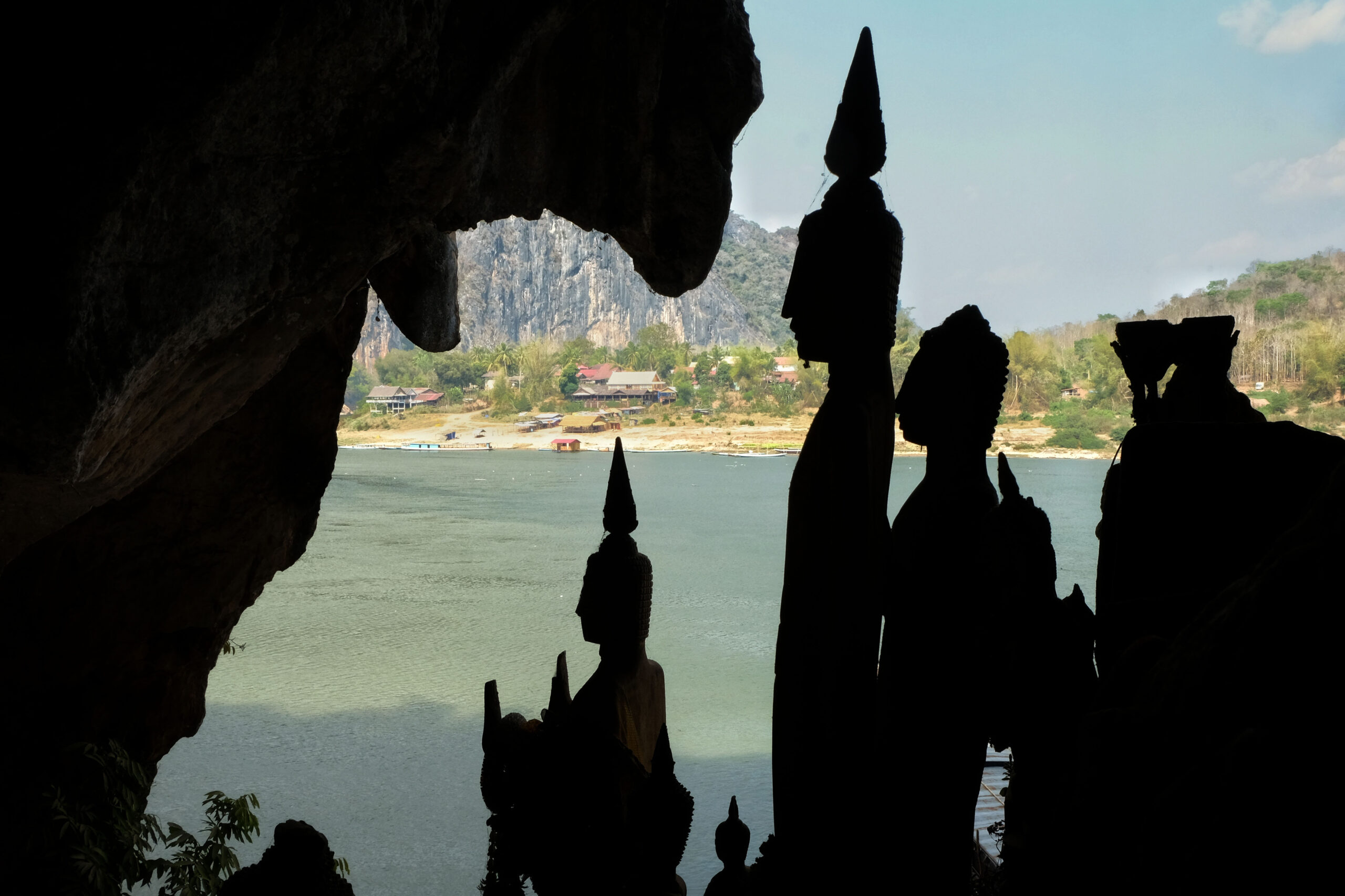Ancient Buddha statues in Pak Ou Cave overlooking the Mekong River
Explore Pak Ou and go deeper into the past
The Pak Ou Caves are one of the most popular tourist sites in Laos and sit where the Ou River converges with the Mekong just north of Luang Prabang. While traveling to this site can be done by river or road, there is a certain element of stepping back in time as you voyage up the Mekong by boat which channels the old explorers that came here in the 19th century. Around Pak Ou don’t limit yourself to just the caves. There are other attractions to keep you busy and you may even want to spend a couple of days exploring the area.
During the cruise up, a stop at the island temple of Wat Don Khoun is recommended. After climbing up a sandy beach you are rewarded with a charming temple displaying simple Buddha statues on its altar. More than likely you will be the only visitor and can enjoy exploring the island. It is also serene and peaceful with only the sounds of leaves fluttering in the breeze and the hum of insects.

On the mainland directly opposite the island is the mysterious Phou Kiaw Stupa on a mountain that juts up at the mouth of the Xeuang River. Phou Kiaw Stupa requires quite a steep climb up through the trees to the top. A huge crumbling brick stupa sits on the summit is on top of the hill. According to legend, it was started at the same time as Chomsi Stupa on top of Phousi Hill in Luang Prabang. Whichever stupa completed first would become the center of power. Chomsi Stupa was finished first and so construction on Phou Kiaw came to a halt.
Nearer to Pak Ou is Xang Hai Village. This village’s claim to fame is its rice whiskey. Try a sip of this warming concoction before seeing traditional weaving and textile manufacturing.
Pak Ou Village, opposite the caves, is worth a stop to see its very enchanting temple, with a red sloping roof and carved elephants guarding the entrance reputed to be one of the oldest temples in Laos.
As you approach the caves you will see a gap in the limestone cliff face with a dramatic set of steep white stairs. The Pak Ou Caves have a lower cave (Tham Ting) and an upper cave (Tham Theung). Significant to the surrounding population as a Buddhist site since the fifteenth century, cave paintings suggest that the site dates back to Neolithic times. The caves were believed to contain a powerful guardian spirit and became associated with royal ceremonies.

The lower cave is where, for centuries, people have come to place Buddha statues for luck, especially during the Lao New Year. Currently, there are about one thousand Buddha statues and their styles range from primitive to ornate, all standing shoulder to shoulder on many rock shelves lining the cave. To the right of the entrance look for the high water marks from the floods of 1966 and 2008 on the cliff face.
The huge cliff next to Pak Ou Village is known locally as Pha Aen and has recently become very popular. If you’re feeling energetic you can find a guide that will take you on a steep hike to the top of the cliffs for a perfect selfie. If you would prefer to stay closer to the ground, try kayaking down the Ou or Mekong Rivers. There are even a few resorts with floating bungalows that allow you to spend the night on the river.
It’s very popular with domestic travelers who like to enjoy al fresco hot pot in the evenings and wake up early to watch the sunrise move across the cliffs.

GETTING THERE
Lao Airlines has regular flights to Luang Prabang.
TEXT BY Anita Preston
PHOTOGRAPHS BY Anita Preston / Evensong Film



 ລາວ
ລາວ
